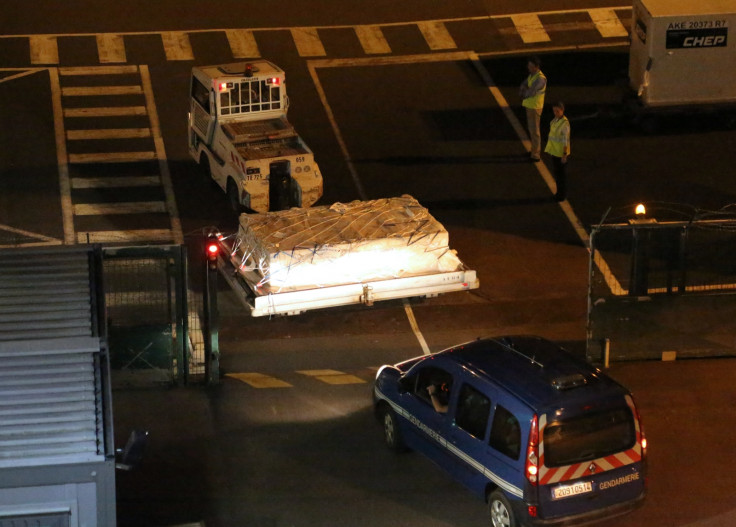Missing flight MH370: Expert team in France to begin analysing debris for clues

A team of experts, led by a French investigative magistrate, will begin analysing a piece of wreckage believed to be part of the missing Malaysian Airlines flight MH370 after it arrived in Paris this morning.
The plane debris, discovered washed up on the Indian Ocean island of Reunion on Wednesday, is thought to belong to the vanished Boeing 777 which was carrying 239 passengers and crew.
MH370's disappearance in March 2014 led to a multinational search which has until now proved fruitless.
Experts hope the heavily-barnacled 2-2.5 metres (6.5-8 feet) long wing surface known as a 'flaperon' and a fragment of luggage discovered on the same beach could reveal clues into the disappearance.
Yesterday Paris prosecutor François Molins appointed the investigative magistrate to lead the team of aeronautic and judicial investigators, including Malaysian authorities, to probe the aircraft part, says the Wall Street Journal.
Malaysian Transport Minister Liow Tiong Lai told Reuters that additional Malaysian officials were heading to Reunion to look for more debris and others would go to France for the investigation.
"If the flaperon does belongs to MH370, it is actually in accordance with the drift pattern seen in the Southern Indian Ocean. But we do not want to speculate. We will wait for verification from the French authorities," said the minister.
After its arrival at 4.17am this morning French authorities will now transfer the piece to a high-tech military laboratory in Toulouse.
If investigators decide the aircraft part is from Flight 370, they will use the lab to try and answer more in-depth questions about the fate of the flight.
This is the same laboratory that analysed debris from the Air France flight from Rio de Janeiro to Paris that crashed into the Atlantic in 2009.
The remains of a suitcase found on the beach next to the debris which will go to a separate crime laboratory in Pontoise.
Geoffrey Dell, a professor specialising in accident investigation at Australia's Central Queensland University, told the Ledger-Enquirer that even after all this time at sea the flaperon may still give a clue to the sorts of forces that tore it off.
He said: "Even though this thing has been floating around in salt water for 16 months, I'd have thought some electron microscope examination would tell us something.
"We could find out what type of overload failure it was, or whether there's any other impact damage.
"You need to look at what evidence this piece of wreckage tells us, and how that fits with what we already know."
When investigators recovered a floating piece of Air France Flight 447's wing in 2009, dents on its surface showed the landing flaps were retracted when it crashed telling investigators the pilots were not trying to carry out a water landing.
An Australian-led search has spent 16 months searching the southern Indian Ocean for the aircraft and Australia's Foreign Minister Julie Bishop said this was the first positive sign.
"This is the first positive sign that we have located part of that plane," she said. "Australia is still committed to assisting and doing whatever we can so that we can locate MH370 and provide answers for the families."
© Copyright IBTimes 2025. All rights reserved.






















